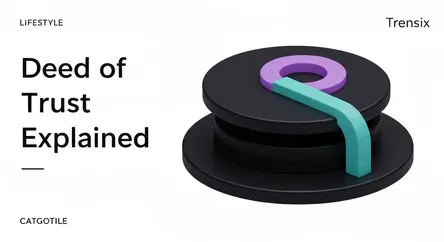Lifestyle
Deed of Trust Explained

Learn what a Deed of Trust is and how this key legal document secures property loans, involving a borrower, lender, and a neutral trustee.
What is it?
A Deed of Trust is a legal agreement used in many U.S. states for real estate transactions, serving a similar purpose to a mortgage. It involves three parties: the borrower (trustor), the lender (beneficiary), and a neutral third party (trustee), who holds the legal title to the property. The trustee holds the title as security for the loan on behalf of the lender. Once the borrower repays the loan in full, the trustee transfers the title back to them. If the borrower defaults, the trustee has the power to sell the property to repay the lender.
Why is it trending?
While not a new concept, understanding Deeds of Trust is increasingly important in today's dynamic real estate market. Lenders in many states prefer them over traditional mortgages because they often include a "power of sale" clause. This allows the trustee to sell the property through a non-judicial foreclosure process if the borrower defaults. This process is typically faster and less expensive than the court-ordered judicial foreclosure required with mortgages, making it an efficient tool for lenders to recover their investment.
How does it affect people?
For homebuyers, a Deed of Trust means a third party holds their property's title until the loan is paid off. This can streamline the closing process but also means facing a quicker foreclosure process upon default. It's crucial for borrowers to understand their rights and obligations under this arrangement. For lenders, it provides a greater degree of security and a more straightforward path to recourse. Ultimately, it is a fundamental document that defines the legal and financial relationship between a borrower and lender in many property purchases, directly impacting financial security and homeownership.